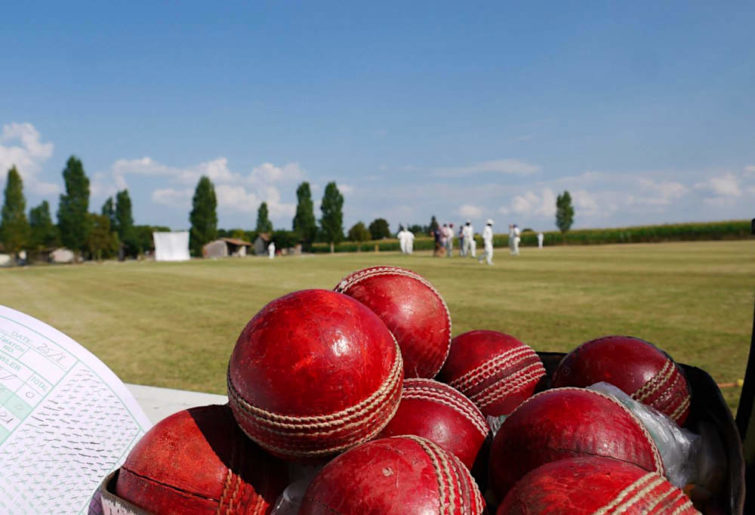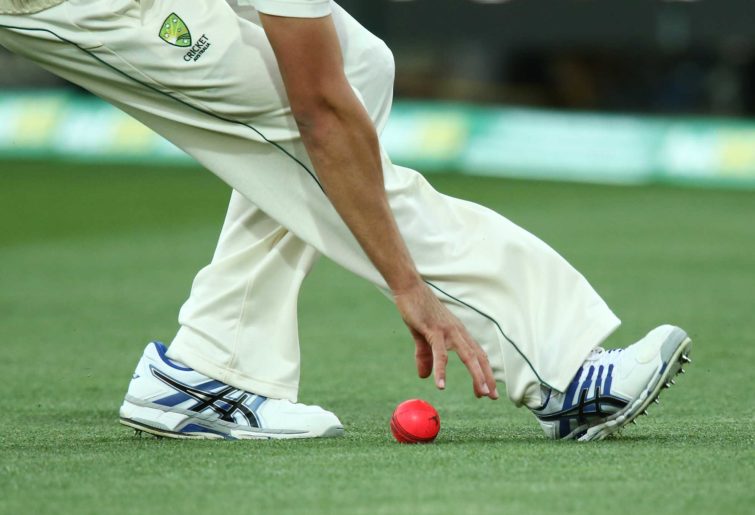This is the first article in a series where I select a team of cricketers from each country who each have the distinction of playing in only one Test.
Nearly 700 cricketers have played Test cricket for England since James Lillywhite led the first Test team out on to the MCG in 1877, and nearly 100 of them only ever won a single Test cap.
But still, a Test is a test, and there’s many reasons why some players only get the one opportunity. Here is a team, in batting order, made up of English players since 1970 who only played one test, and it’s quite a good side.
The early batting order of Mark Benson, Andy Lloyd, John Stephenson and Alan Butcher all have considerable experience as opening batsmen, notching up around 72,000 first class runs and 148 centuries between them.
Middle order batsmen Alan Wells and Paul Parker are also prolific run scorers with another 40,000 first class runs and 93 centuries to their credit. Makeshift wicket keeper Gavin Hamilton is potentially the weakest link here but options were limited.
The pace attack of Tony Pigott, Arnie Sidebottom and Mike Smith is both balanced and experienced, with a combined 1,800 first class wickets, and both Pigott and Sidebottom are handy with the bat. Batsman John Stephenson offers support to the pace attack with his medium pacers.
The hot and cold Simon Kerrigan is the lone front line spinner, with some part time assistance from Alan Butcher. Not the worst Test team to take the field by a long shot.
1 – Mark Benson
Probably better known as an umpire, Benson was an institution in County Cricket for Kent, where he played nearly 300 matches in 15 seasons, scoring over 18,000 runs at the healthy average of just over 40. The diminutive left handed opener was a difficult batsman to dismiss, and he amassed over 1,000 per season on 12 occasions, scoring 48 centuries and 99 half centuries along the way.
He played his only Test in 1986 at the age of 28 when he replaced the injured Wayne Larkins for the third Test against India in Birmingham, batting for over four hours across both innings, facing 220 balls, and finishing with scored of 30 and 21.
Many thought that he was the ideal type of batsman to stand up to then rampant West Indies pace attack, but this turned out to be his only test.
2 – Andy Lloyd
A talented left handed opening batsman, Lloyd’s career looked to be well and truly on the rise in 1984 when he topped scored in two of the three ODIs against the West Indies preceding the Test series, and was then selected at the age of 28 to open the batting in the first Test of the series at Birmingham.
Unfortunately for Lloyd, he was struck in the head by a ball from Malcolm Marshall early in the first innings, and despite the fact that he was wearing a helmet, he not only took no further part in that match, but also didn’t play any cricket at all for the rest of the season.
Although he went on to score over 17,000 runs in County Cricket at an average of just over 34 until his career ended in 1992, he never played another test. He holds the record of being the only Test opener never to be dismissed.
3 – John Stephenson
Stephenson was quite a handy all-rounder in County Cricket, scoring nearly 15,000 runs at an average of just over 32, and taking nearly 400 wickets with his right arm medium pace, also at an average of just over 32.
He played his only Test at the age of 24 in 1989 when selected to open the batting against Australia in the drawn sixth Test at the Oval, in a bizarre season where England selected a total of 29 players across the series.
Terry Alderman dismissed Stephenson in both innings, for scores of 25 and 11, and he didn’t get an opportunity to bowl his medium pacers. Even though Stephenson’s first class career continued on until 2006, he was never selected again.
4 – Alan Butcher
How Butcher only played one Test for England is a mystery to many. The aggressive left hander hailed from a strong cricketing family, and he was a noted performer against fast bowling, notching up over 22,000 first class runs in 402 games at an average of over 36.
He scored 46 centuries and 123 half centuries in his career, and could also bowl some very handy left arm orthodox when required, which netted him 141 first class wickets.
His only start in the big time came in the drawn fourth Test against India in 1979 at the age of 25, when he opened the batting with Geoffrey Boycott. He was dismissed for scores of 14 and 20, and despite continued good form in County Cricket, was never called upon by his country again.
5 – Alan Wells (Captain)
Alan Wells was a fine cricketer and a classy right handed batsman who can consider himself very unlucky to only play one Test. He played 16 seasons for Sussex, including eight as captain, before finishing his career with four seasons with Kent.
He scored over 21,000 first class runs at an average of just over 38, including 46 centuries and 101 half centuries. He was probably well past his best at the age of 34 when he finally got his chance in Test cricket, batting at six in the drawn sixth Test of the 1995 series against the West Indies.
Curtly Ambrose dismissed him for a golden duck in the first innings and he was on three not out off 39 balls in the second innings when play ended.
6 – Paul Parker
Paul Parker was a prolific run scorer in first class cricket, scoring over 19,000 runs at the healthy average of just over 35. A stylish attacking batsman, Parker scored 47 first class centuries and 89 half centuries, and was particularly effective against spin bowling.
He also had a reputation as one of the best fielders in the country. He made his Test debut when he was called up for the drawn sixth Test against Australia in 1981, but was caught by Martin Kent of Terry Alderman’s bowling in each innings, for scores of 0 and 13.
He was a surprise omission from the following tour of the sub-continent, and never got another opportunity to play Test cricket.

(Credit: Wolliwoo/CC BY-NC 2.0)
7 – Gavin Hamilton (W/K)
There’s not much to choose from when it comes to English one-test wicket keepers, so the role goes to Hamilton on the basis that he has kept wickets on occasions in County Cricket.
Better known though as a free hitting batsman and swing bowler, he played his only Test for England in 1999 in the first Test against South Africa in Johannesburg, when England were soundly defeated by an innings and 21 runs. He was a surprise selection for the tour, apparently chosen on the basis of his performances for Scotland in the 1999 Cricket World Cup.
Hamilton joined the elite club of batsmen to score a pair in his first Test and only test, being cleaned up twice by player of the match Alan Donald. He didn’t do much better with the ball either, taking 0-63 off 15 overs.
8 – Tony Pigott
Piggott was a right arm fast bowler, and handy lower order bat, who can put his brief Test career down to being in the right place at the right time. He was playing provincial cricket in New Zealand in 1984 when the touring English team found themselves short of fast bowlers, and he received an unlikely call up into the Test team for the second Test.
New Zealand won the game by an innings and 132 runs as England failed to pass 100 runs in either innings. Pigott finished with 2-75 off his 17 overs in NZ’s first innings, and they weren’t required to bat again.
Despite taking 672 wickets and scoring nearly 5,000 runs in first class cricket, Pigott was never called on by the selectors again.
9 – Arnie Sidebottom
A tall right handed fast medium bowler, Sidebottom began his sporting career playing both football and cricket at the top level. After not having any real success at football, he focused his efforts on his cricket career with Yorkshire, winning his county cap in 1980.
He took nearly 600 first class wickets at an average of just over 24 during his career, and was also handy with the bat, scoring over 4,500 runs at an average of just over 22.
His sole Test match opportunity came at the age of 31 when he opened the bowling against Australia in the drawn third Test at Nottingham. His solitary Test wicket was night watchman Bob Holland, and he finished with 1-65 before limping off with a foot injury mid-way through his 18th over.

(Photo by Morne de Klerk/Getty Images)
10 – Simon Kerrigan
Many thought that Kerrigan was going to be the next big thing when it came to English spin bowling. A left arm orthodox spinner, he established himself as Lancashire’s number 1 spinner in 2012, put in some solid performances for the England Lions, and then started the 2013 season strongly with 47 wickets in ten games.
After England had wrapped up the 2013 ashes series in four games, Kerrigan was surprisingly called up for his Test debut in the fifth Test at the age of 24, presumably to give him some experience and with an eye to the future.
Sharing the spin duties with Graeme Swann, Kerrigan bowled poorly and was belted out of the attack, particularly by Shane Watson who went on to score 176 as Australia put on 492 in the first innings.
Kerrigan didn’t take a wicket and his eight overs came at a cost of 53 runs. He wasn’t called on to bowl in Australia’s second innings and his first class career never really recovered.
11 – Mike Smith
Smith was a talented left arm swing bowler who played 14 seasons with Gloucestershire, taking over 530 wickets at an average of just over 24. He took five wickets in an innings on 22 occasions and 10 wickets in a match five times.
Neither tall nor express pace, Smith was nonetheless one of the best swing merchants in the country when he got his Test call up at the age of 30 in 1997. Bowling first change against Australia in the fourth Test against Australia at Headingly, he had a sliding doors moment when Australian opener Matthew Elliott was dropped off his bowling when on just 29.
Elliott went on to score 199 and Australia won the game by an innings and 61 runs. Smith finished with 0-89 off 23 overs and never played for England again.
12 – Jon Lewis (12th Man)
Lewis was a tall right handed fast medium bowler who had a stellar first class career, taking 849 wickets at just over 26 in his 251 game career, and scoring nearly 5,000 runs into the bargain.
He played 13 ODIs for England and was 12th man for their Test team on several occasions, but received his only Test cap at the age of 30 when he was called into the English side for the third Test against Sri Lanka in June 2006.
Opening the bowling with Matthew Hoggard, he finished with 3-68 off 21 overs in the Sri Lankan first innings, only bettered by Andrew Flintoff’s 3-52, and scored a handy 20 runs batting at 10 in England’s first innings, as they struggled to reach 229.
That was pretty much the extent of his contribution as England were dismissed in their second innings for 190, losing the match by 134 runs. He was overlooked for future Tests.






























































































